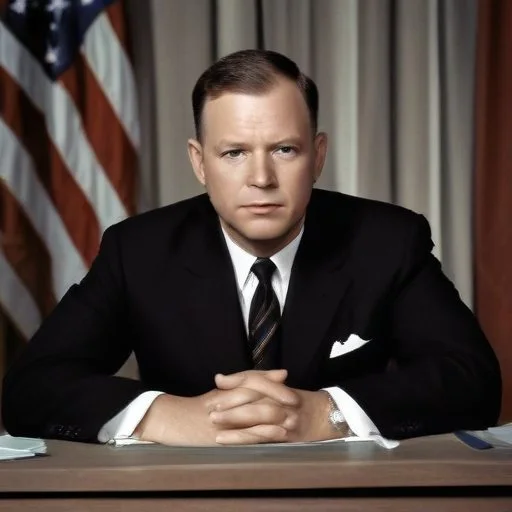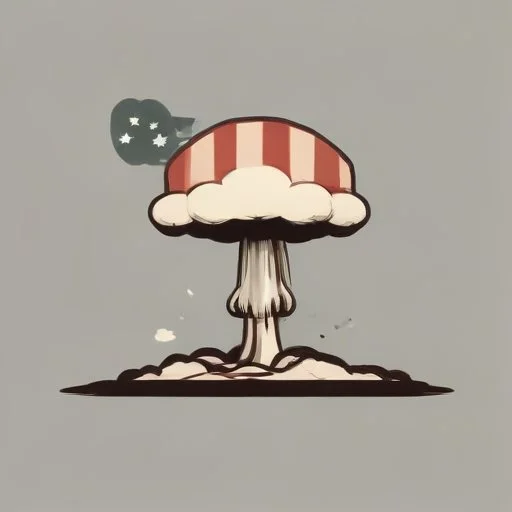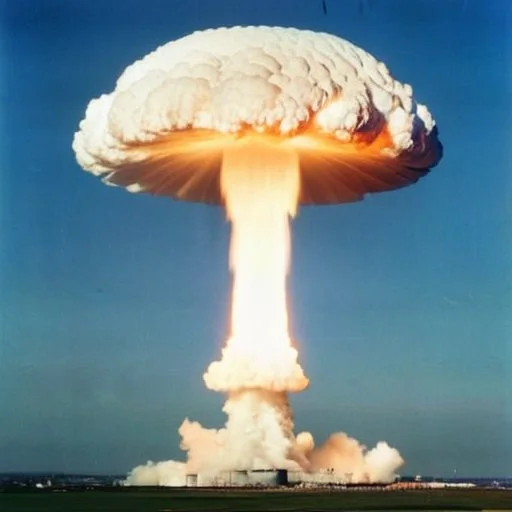Kennedy Announces Soviet Missiles in Cuba, Imposes Naval Quarantine
President Kennedy's stern face gazed out at the nation as he revealed the shocking discovery: Soviet nuclear-armed ballistic missiles, mere miles from American shores, in communist Cuba. This brazen move, authorized by Soviet Premier Nikita Khrushchev, had the potential to upset the fragile global balance of power. After consulting with trusted advisors, including former President Dwight D. Eisenhower, Kennedy declared a naval quarantine of Cuba, effectively blockading the island nation to prevent further Soviet buildup. The world held its breath as the United States and the Soviet Union teetered on the brink of nuclear war.
The Cuban Missile Crisis: A Precarious Balance of Power
Averting Nuclear War: The Momentous Decision of October 1962
The Cuban Missile Crisis, a 13-day standoff between the United States and the Soviet Union in October 1962, is widely regarded as the closest the world has come to nuclear war. Following the discovery of Soviet nuclear-armed ballistic missiles in Cuba, mere miles from American shores, President
John F. Kennedy, after Internal counsel from
Dwight D. Eisenhower, made the bold decision to announce a naval quarantine of the Communist nation, effectively blockading the island to prevent further Soviet buildup.
Historical Background: The Cold War and Castro's Cuba
The Cuban Missile Crisis was the culmination of a series of events that had been unfolding since the early 1960s. The rise of
Fidel Castro's Communist government in Cuba, following the 1959 revolution, had led to a deterioration in relations between Cuba and the United States. The failed Bay of Pigs invasion in April 1961, authorized by President Kennedy, had only exacerbated tensions between the two nations.
Key Figures Involved: The Players in a High-Stakes Game
- President John F. Kennedy: The 35th President of the United States, Kennedy played a crucial role in navigating the crisis, balancing the need to protect American interests with the need to avoid nuclear war.
- Premier Nikita Khrushchev: The Soviet Premier, Khrushchev authorized the deployment of nuclear-armed ballistic missiles in Cuba, sparking the crisis.
- Dwight D. Eisenhower: The 34th President of the United States, Eisenhower provided counsel to Kennedy during the crisis, drawing on his experience as a military strategist.
- Fidel Castro: The Cuban leader, Castro permitted the Soviet Union to deploy missiles on the island, precipitating the crisis.
Timeline of Events: A 13-Day Countdown
- October 14, 1962: American reconnaissance planes discover Soviet nuclear-armed ballistic missiles in Cuba.
- October 16, 1962: Kennedy convenes an emergency meeting with his advisors to discuss the crisis.
- October 22, 1962: Kennedy announces the discovery of the missiles and declares a naval quarantine of Cuba.
- October 24, 1962: Soviet ships approach the quarantine line, but eventually turn back.
- October 28, 1962: Kennedy and Khrushchev reach a deal, wherein the Soviet Union agrees to dismantle the missile sites in Cuba in exchange for a US promise not to invade the island.
Major Outcomes and Impacts: A New Era of Détente
The Cuban Missile Crisis had far-reaching consequences, leading to a significant shift in the Cold War dynamics.
- Nuclear Arms Control: The crisis prompted a renewed focus on nuclear arms control, leading to the signing of the Partial Nuclear Test Ban Treaty in 1963.
- Hotline Establishment: The crisis highlighted the need for a direct communication link between the US and the Soviet Union, leading to the establishment of the Moscow-Washington hotline.
- Rapprochement: The crisis marked a turning point in US-Soviet relations, paving the way for a period of détente in the late 1960s and 1970s.
Cultural and Social Influences: A Nation on Edge
The Cuban Missile Crisis had a profound impact on American society, sparking widespread fear and anxiety.
- Fallout Shelters: The crisis led to a surge in the construction of fallout shelters, as Americans scrambled to prepare for the worst.
- Cold War Paranoia: The crisis fueled Cold War paranoia, with many Americans believing that the Soviet Union was intent on destroying the United States.
- Nuclear Fear: The crisis raised awareness about the dangers of nuclear war, leading to a growing anti-nuclear movement in the United States.
Comparative Analysis with Similar Events: A Unique Crisis
While the Cuban Missile Crisis was a singular event, it shares some similarities with other instances of brinkmanship in history.
- The Berlin Blockade (1948-1949): The Soviet Union's blockade of West Berlin, and the subsequent US-led airlift, shared some parallels with the Cuban Missile Crisis.
- The Taiwan Strait Crisis (1958): The standoff between the United States and China over Taiwan's Quemoy and Matsu islands had some similarities with the Cuban Missile Crisis.
Personal Accounts and Anecdotes: A Glimpse into the Decision-Making Process
Robert Kennedy, the Attorney General and brother of the President, would later recall the sense of urgency and fear that pervaded the White House during the crisis.
- "We're eyeball to eyeball, and I think the other fellow just blinked." - Robert Kennedy, recalling the moment when the Soviet ships turned back.
Impact on Future Events: A Legacy of Détente
The Cuban Missile Crisis had a lasting impact on international relations, paving the way for future diplomatic efforts.
- SALT I (1972): The Strategic Arms Limitation Talks, which led to the signing of the SALT I treaty, were a direct consequence of the Cuban Missile Crisis.
- Détente: The crisis marked a turning point in the Cold War, leading to a period of détente and increased diplomatic engagement between the United States and the Soviet Union.
Trivia and Fun Facts: The Crisis in Popular Culture
The Cuban Missile Crisis has been immortalized in popular culture, featuring in numerous films, books, and TV shows.
- "Thirteen Days" (2000): The film, starring Kevin Costner, dramatizes the crisis from the perspective of Kennedy's advisors.
- "The Manchurian Candidate" (1962): The film, released just a few months after the crisis, explores the theme of Cold War paranoia and McCarthyism.

Thorough Character Sketch
Premier Nikita Khrushchev: A Complex Figure
Khrushchev's decision to deploy nuclear-armed ballistic missiles in Cuba was a calculated move to counter the perceived threat of American missiles in Turkey. However, this move was also driven by Khrushchev's own personal ambition and desire to assert Soviet dominance on the world stage.
Despite his tough exterior, Khrushchev was known to be a complex figure, prone to outbursts of anger and impulsiveness. His leadership style was often marked by a mix of bravado and recklessness, which sometimes put him at odds with his own advisors.
During the crisis, Khrushchev's personal correspondence with Kennedy revealed a more nuanced and even conciliatory tone, suggesting that he was willing to compromise to avoid nuclear war. This contrast between his public and private personas has led historians to reevaluate Khrushchev's role in the crisis, highlighting the importance of understanding the motivations and personality traits of key figures in shaping historical events.

Rich Cultural Review
The Crisis in the Cultural Consciousness
The Cuban Missile Crisis had a profound impact on American culture, reflecting and shaping the anxieties and fears of the Cold War era. The crisis coincided with a surge in popularity of films and literature that explored the themes of nuclear war and apocalypse.
In the aftermath of the crisis, popular culture began to reflect a growing sense of paranoia and mistrust, with films like The Manchurian Candidate and Dr. Strangelove capturing the mood of the times. The crisis also spawned a wave of nuclear-themed music, with songs like "99 Red Balloons" and "Christmas in the Trenches" becoming anthems of the era.
The crisis also had a profound impact on the art world, with artists like Andy Warhol and Allen Ginsberg creating works that reflected the anxieties and uncertainties of the time. The crisis thus became a cultural touchstone, symbolizing the fears and anxieties of a generation.
Geopolitical Analysis
The Geopolitical Context of the Crisis
The Cuban Missile Crisis was not an isolated event, but rather the culmination of a complex set of geopolitical tensions that had been building for decades. The crisis was shaped by the bipolar world order of the Cold War, with the United States and the Soviet Union engaged in a global struggle for dominance.
The crisis was also influenced by the decolonization of Africa and Asia, which had created a power vacuum that both superpowers sought to fill. The construction of the Berlin Wall in 1961 had further heightened tensions, with the Soviet Union seeking to consolidate its grip on Eastern Europe.
The crisis thus reflected the complex interplay of global forces, with the fate of Cuba serving as a proxy for the larger contest between capitalism and communism. Understanding the geopolitical context of the crisis is essential to grasping the motivations and actions of the key players involved.

Historiographical Insights
Historiographical Perspectives on the Crisis
Historians have long debated the causes and consequences of the Cuban Missile Crisis, with different interpretations reflecting changing historical contexts and perspectives. The crisis has been seen as a classic example of brinkmanship, with both sides pushing the other to the edge of nuclear war.
Revisionist historians have argued that the crisis was not solely the result of Soviet aggression, but rather a response to perceived American threats, including the failed Bay of Pigs invasion and the presence of American missiles in Turkey.
More recent scholarship has highlighted the importance of exploring the crisis from multiple perspectives, including the role of Fidel Castro and the significance of the crisis in the broader context of the Cold War. This nuanced approach has enriched our understanding of the crisis, highlighting its complexity and multifaceted nature.
Study of Technological Effects
The Technological Impact of the Crisis
The Cuban Missile Crisis was a watershed moment in the development of military technology, with the crisis highlighting the importance of surveillance and intelligence gathering. The discovery of the Soviet missile sites was facilitated by advanced reconnaissance technology, including the use of U-2 spy planes.
The crisis also accelerated the development of nuclear submarines, which played a critical role in the crisis by providing a secure second-strike capability. The crisis further spurred the development of communication technology, including the creation of the Moscow-Washington hotline.
The crisis thus marked a significant turning point in the technological arms race, with both sides investing heavily in research and development to gain a strategic advantage. This technological competition would continue to shape the Cold War, driving innovation and influencing the course of international relations.


